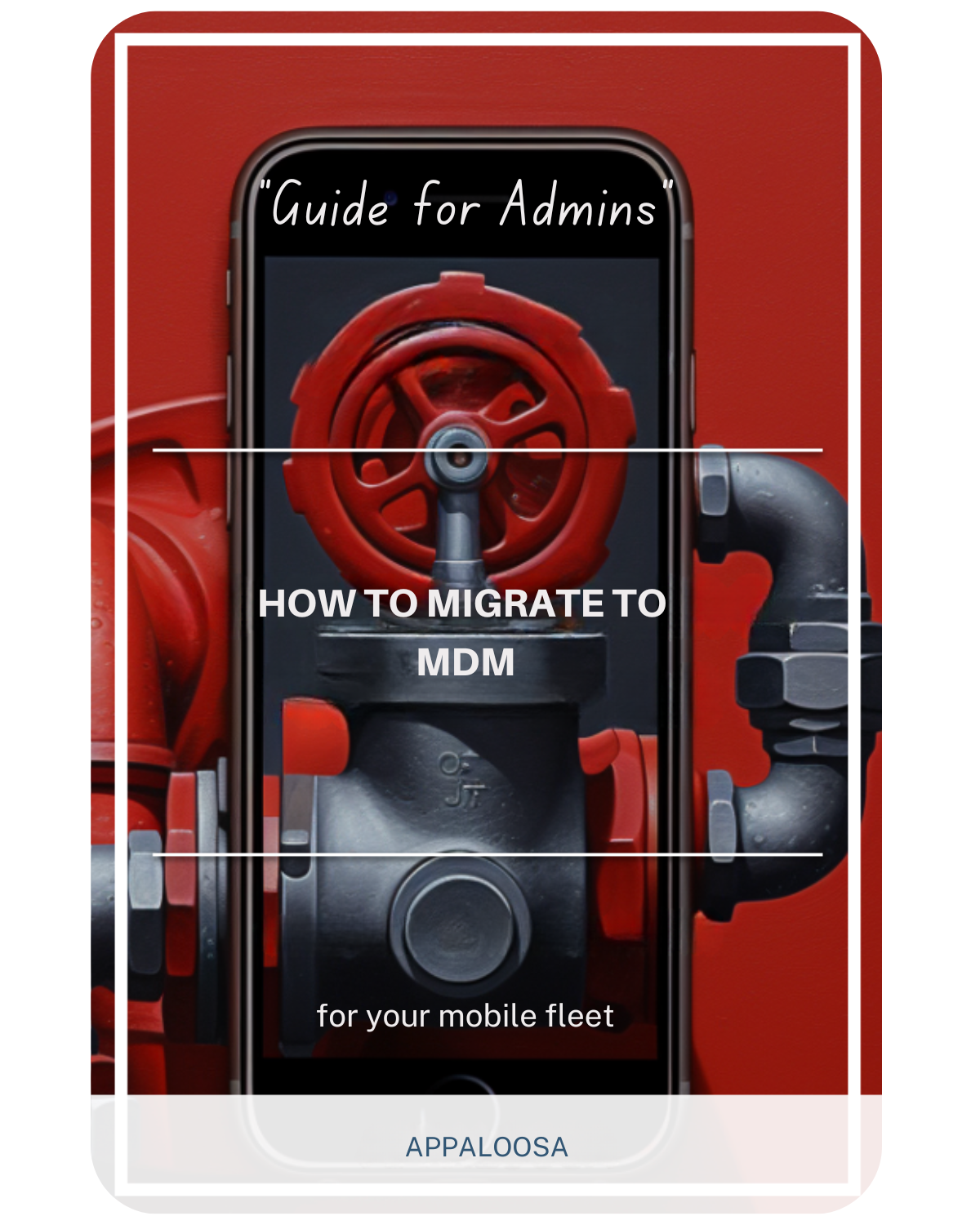Your Ultimate MDM Pre-Migration Checklist: Prepare Before the Move

Moving to a fabulous new Mobile Device Management (MDM) solution is quite the task. It requires careful planning, coordination, and execution. Fortunately, this blog post is here to help you through the MDM migration process smoothly. While the idea of adopting a feature-packed and cost-effective MDM solution may be tempting, it's important to approach the planning phase with discipline to avoid unnecessary complications. It's crucial to avoid diving headfirst into challenges that could have been easily avoided.
Note: this article is part of our guide "How to Migrate Your Mobile Device Fleet to Mobile Device Management"
The objective of this guide is to arm you with a robust pre-migration checklist that can serve as your playbook for the migration journey. We'll dissect each item on the list, offering insights into why they are essential and how best to approach them.
Understanding What's at Stake: The Costs of Migration
Financial and Time Investments
Cost is a substantial factor in the decision-making process for MDM migration. While it's tempting to focus solely on the pricing of the new MDM solution, it's a grave mistake to overlook the ancillary costs associated with migration. These can include downtime, manpower, potential data loss, and other non-obvious expenses like training and post-migration support. Therefore, calculating a comprehensive budget that encompasses all these variables is critical.
Budget and Time Estimation
In line with the costs, estimating the time required for the migration is equally crucial. Too often, organizations underestimate the timelines, leading to rushed implementations and costly errors. It's advisable to consult all stakeholders involved in the migration to create a realistic timeline. This includes not just the IT department but also departments like HR and legal, which may have specific compliance requirements and thus, a stake in the migration process.
Device Inventory and Compatibility
Audit Your Device Fleet
Before you can even think about switching to a new MDM system, you must have a crystal-clear understanding of your existing device landscape. This means conducting a comprehensive audit to identify the types of devices in use, their operating systems, and any other pertinent configurations. The findings from this audit will significantly influence your choice of a new MDM system.
Compatibility with Target MDM System
Once you have audited your device fleet, the next step is to ensure that these devices are compatible with your target MDM system. This includes checking that the devices' operating systems are supported and that their hardware configurations meet the system requirements of the new MDM solution. Skipping this step can lead to severe complications during migration, including the possibility of having to replace devices that are incompatible—another cost that organizations often fail to factor into their budget.
The Necessity of Device Reset
Why a Reset is Often Required
Transitioning to a new MDM system often necessitates a full reset of the devices being managed. This is particularly true when migrating from one MDM provider to another, as the policies, configurations, and management credentials usually differ between systems. Therefore, you should prepare for this eventuality by informing all device users and stakeholders well in advance. Additionally, it may be necessary to release the devices from the previous MDM system.
Preparing Users for the Reset
Preparing for device resets is not just a technical requirement but also a human one. You need to communicate to the end-users the need for the reset, how it will affect them, and the steps they need to take to backup their data. Moreover, this is an opportunity to train them on the features and functionalities of the new MDM system, making the transition smoother for all parties involved.
Configuration of the New MDM System
Initial Setup and Operations
Before you begin migrating devices, the new MDM system itself needs to be primed for action. This involves setting up various operational parameters like device policies, security settings, and access controls. The setup phase is the time to integrate the new MDM system with existing enterprise systems, be it your directory service, email system or any other critical business application.
Support Systems in Place
Having a support system is vital during the migration phase. This involves setting up a dedicated team or resource tasked with troubleshooting issues that may arise during the migration. Even with the best preparation, unexpected challenges can always emerge. Therefore, having an on-call support system will go a long way in ensuring that such problems are addressed in real-time, preventing potential delays or disruptions.
Pilot Testing: Why it's Crucial
Importance of a Sample Migration
Before you take the plunge and migrate your entire device fleet, running a sample migration is highly advisable. This pilot test should be conducted on a small but representative subset of devices. The insights gained from this initial run can be invaluable, allowing you to identify potential roadblocks and devise strategies to circumvent them.
Of course, conducting pilot tests necessitates a well-defined set of criteria, testing protocols, and time limitations.
Evaluating the Sample Migration
Once the sample migration is complete, it's essential to evaluate its success critically.- Did the devices migrate as expected?
- Were there any data losses or compatibility issues?
- Were the users comfortable with the new setup?
Conclusion
In summary, migrating to a Mobile Device Management (MDM) solution is a complex process that requires careful planning and attention to detail. From considering the costs involved to preparing your device inventory and configuring the new MDM system, this comprehensive checklist will guide you through each step of the migration. It is important to ensure that every item on the checklist is addressed before proceeding with a full-scale migration.
If your organization uses a combination of iOS and Android devices, it is beneficial to delve deeper into platform-specific considerations. We encourage you to read our follow-up articles tailored specifically for iOS MDM and Android MDM migrations. These articles provide detailed insights into the unique challenges and best practices associated with each platform, allowing you to further refine your migration strategy.
If you require specialized guidance, do not hesitate to reach out to the experienced professionals at Appaloosa. They can provide you with a personalized migration plan that caters to your organization's specific requirements.
